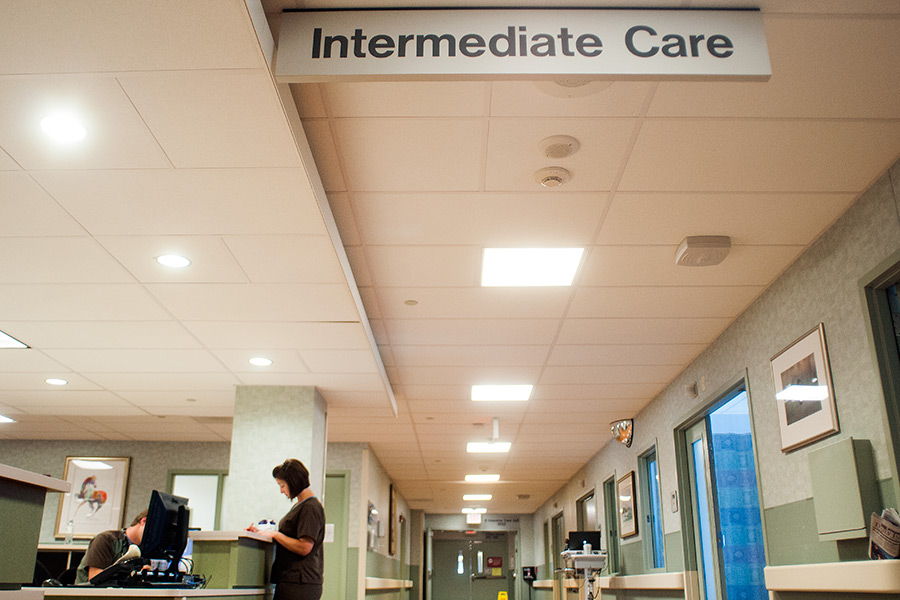When the Afforable Care Act – also known as Obamacare – was held up as law in 2012, the country made a shift toward a preventative care model, with people going back to primary care physicians to diagnose and follow their issues.
Preventative treatment is less expensive than reactive treatment; according to a report on improving health care in America from the Bipartisan Policy Center, Americans spend twice as much on health care as people in other developed countries, yet we have shorter life spans and higher rates of infant mortality and diabetes.
Chronic disease accounts for 86 percent of all U.S. health care costs, the policy center reported, and such health issues affect about half of the adult population in the country.
However, visiting a primary care doctor in Montana to catch these health problems early can be a challenge in itself.
“A physician workforce shortage has been an ongoing issue in Montana and it definitely has been a priority issue for the Montana Medical Association,” Jean Branscum, CEO of MMA, said. “It’s an issue we work on on a continual basis.”
The entire country is expected to endure a physician shortage in general, with the Association of American Medical Colleges projecting a shortfall of between 46,100 and 90,400 doctors by 2025. There may be more doctors coming out of schools, the AAMC reported, but the demand for their services is expected to grow dramatically.
A lack of doctors is already on the radar for health centers in the Flathead. The Flathead City-County Health Department, along with North Valley Hospital in Whitefish and Kalispell Regional Healthcare, noted specific efforts in recruiting and retaining primary care doctors to keep up.
Rhonda Tallman, senior director of provider and clinical services at North Valley, said her experience working with the hospital’s outpatient clinics has illuminated some of the reasons keeping doctors here can be tough, such as lower wages and high patient volume from residents and visitors.
“We live in a county with a certain population, but we have an influx in both seasons, the summer and the winter, but they don’t live here,” Tallman said.
Rural physicians also tend to work longer hours, leading to burnout. But Tallman said North Valley is “doing fine” with family practice doctors, despite challenges.
At Kalispell Regional Healthcare, Jim Oliverson, vice president, said the health care system recruited 40 doctors in 2015, and four of them were primary care physicians. In 2016, Oliverson said KRH would attempt to recruit at least 10 more primary care doctors to meet demand.
Hillary Hanson, deputy health officer at the city-county health department, said the most recent health care needs assessment conducted by the three entities highlights the complexities of why people don’t see doctors with regularity.
“It’s a little bit the lack of physicians, a little bit ensuring physicians are available, and ensuring the patient can pay,” Hanson said.
Flathead County is designated as a health provider shortage area through the U.S. Department of Health and Human Services, with a classification for low income as well as a shortage in primary care. That designation made the county eligible for financing that eventually led to the Flathead Community Health Center, Hanson said, providing more access for county residents and allowing payment on a sliding scale.
Since the lack of primary care doctors isn’t a new problem, the health center has already taken steps to combat it. Its relatively new residency program brought in six new physicians to the center, who not only provide more hands on deck, but who may also fall in love with working in Northwest Montana.
“One of the intents of the residency is to train physicians in Montana so they stay in Montana,” Hanson said.
Montana doesn’t have its own medical school, but does participate in the University of Washington School of Medicine’s Wyoming, Washington, Alaska, Montana, and Idaho program (WWAMI), a pipeline for pre-med students in Montana to get a cost-effective education and potentially end up working in the five-state area.
Recently, a private medical school began testing the waters in various Montana cities, without finding a suitable home. The conversation began swirling about what such a facility could do to boost the physician numbers in the state, but Branscum, with the Montana Medical Association, said such a proposal would need careful consideration.
Currently, there are 26 residents working throughout the state. That’s what the state has worked up to since the first residency programs started in 1995, Branscum said.
“To grow from 1995 and to have these new residency programs emerge just in the last few years is truly remarkable,” she said.
Billings Clinic just increased the number of residents it accepts, from six to eight. Kalispell’s addition of six residents is a bright spot, she said.
“When you grow, that’s something to be pretty proud of as a community,” Branscum said.
The potential for a new, for-profit medical school raised concerns among state physicians because there isn’t a capacity for that many medical students, she said. There would be 150 third-year and 150 fourth-year students to place in programs, which wouldn’t be possible right now.
“To grow that much, we’ve got to think about the scalability to grow it right, and make sure it’s a quality medical education,” Branscum said.
Building up new doctors to practice in Montana begins in identifying such students in high school, then getting them access to medical educations. Students from rural communities applying for medical school seems to be declining, she said, and it’s usually those students who end up working in those rural communities.
Otherwise, the importance of rural rotations can’t be understated.
“If we want doctors in Montana, we really need to make sure they experience a clinical rural rotation,” Branscum said.
